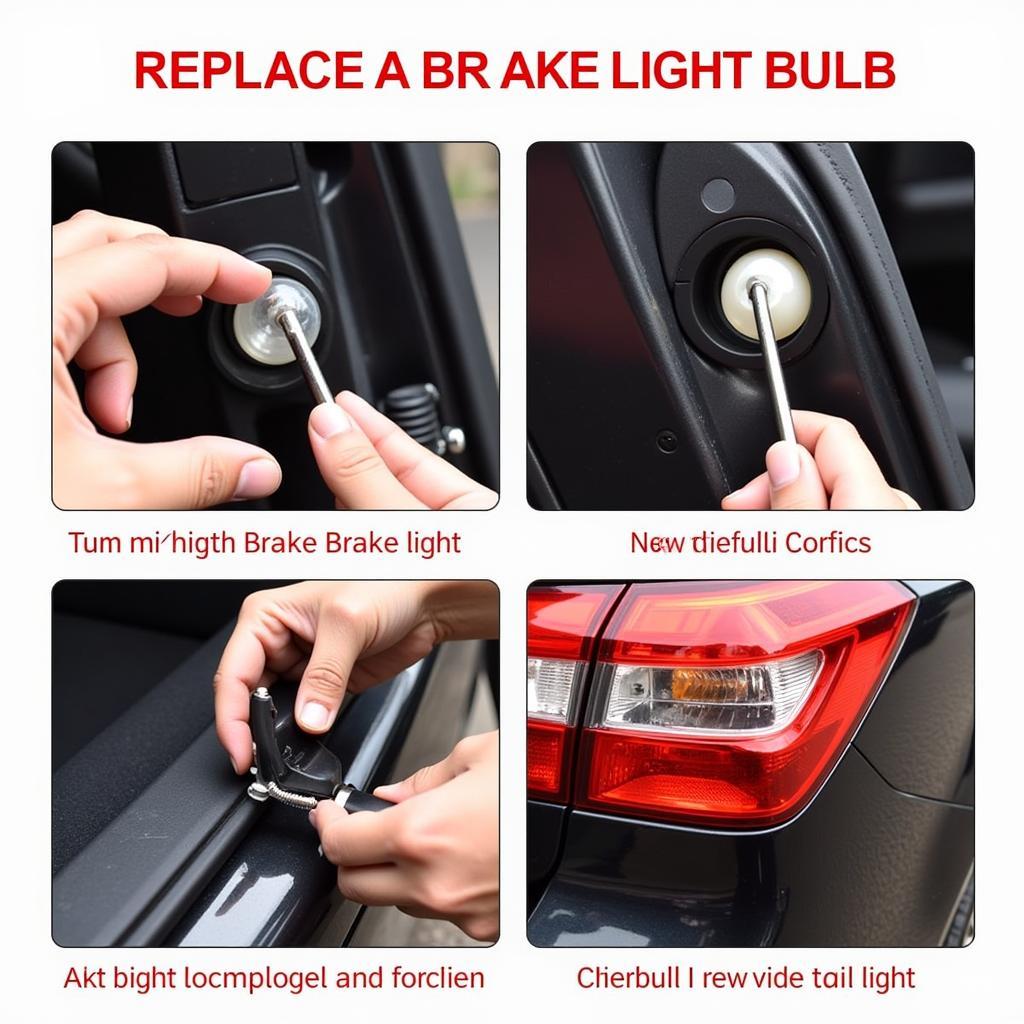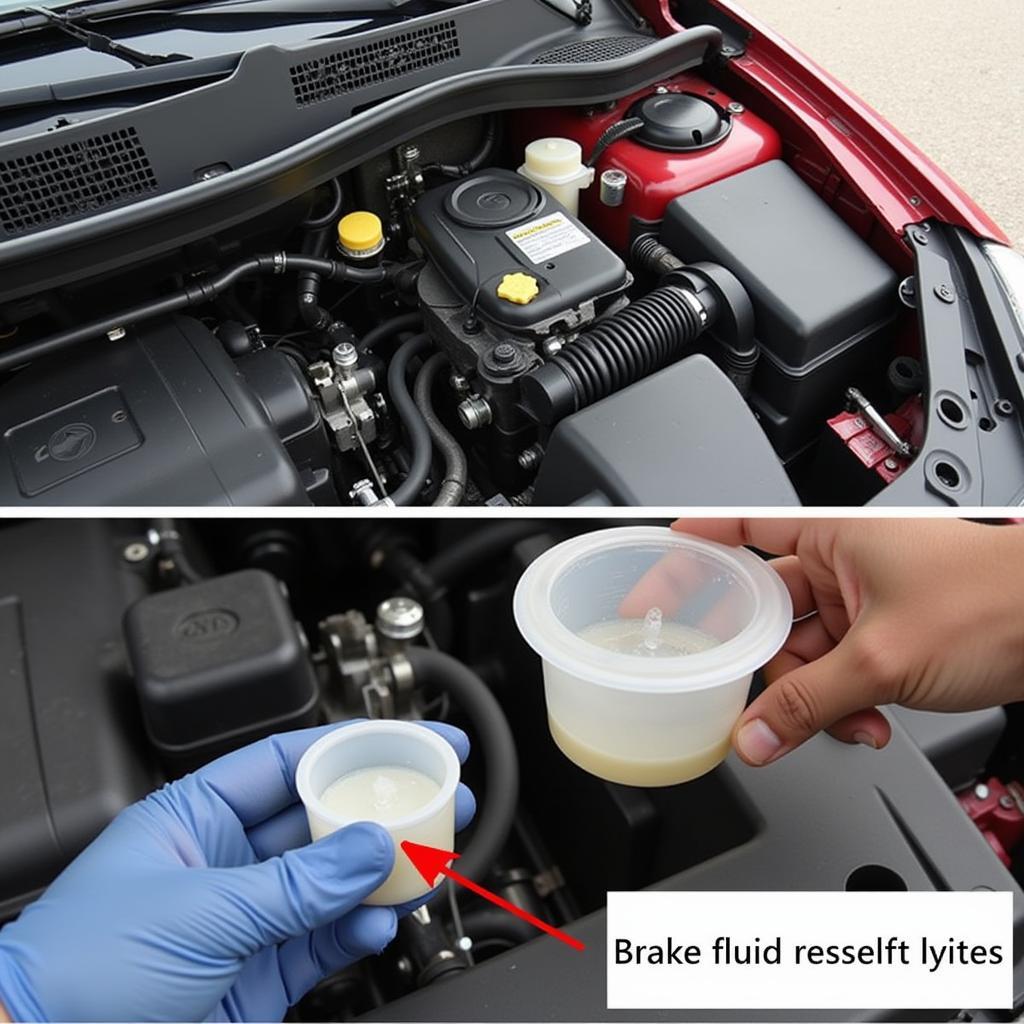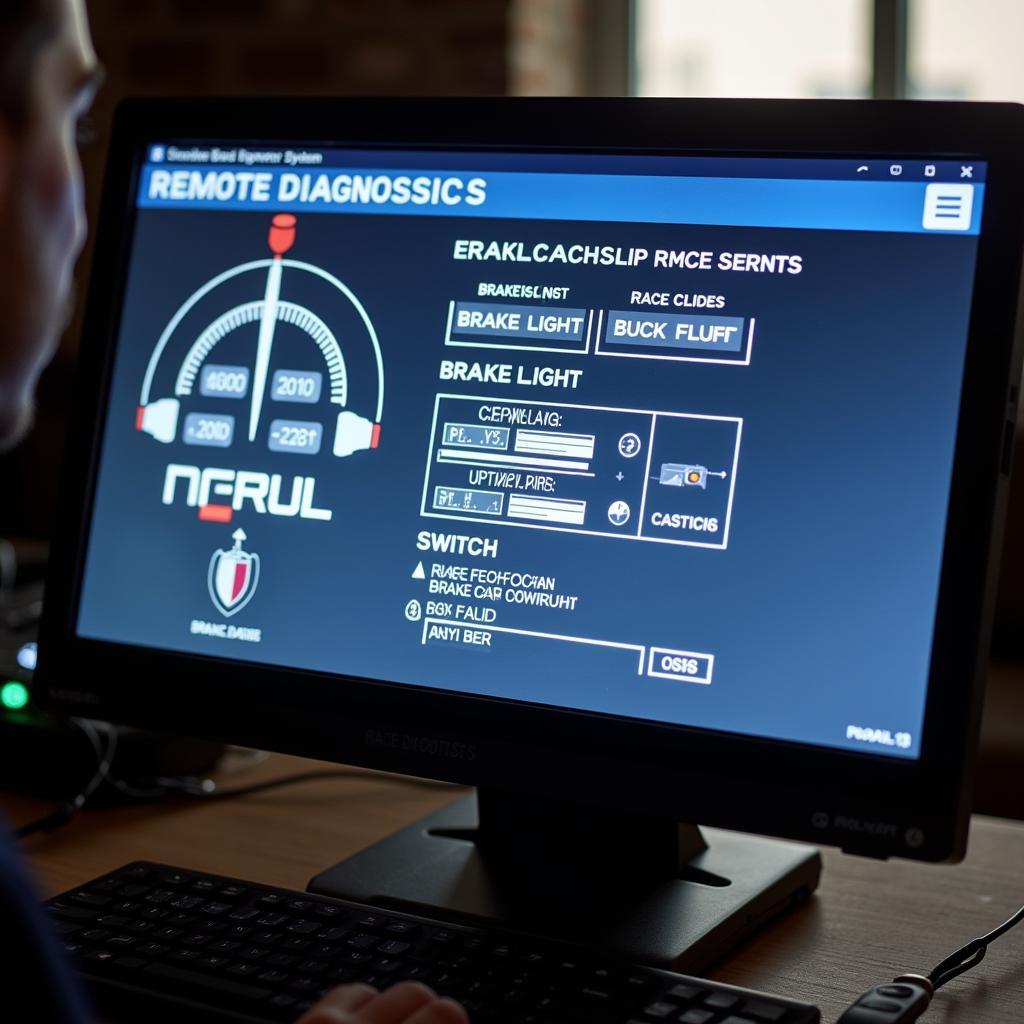The brake lamp indicator warning light is a crucial safety feature in your vehicle, alerting you to potential issues with your braking system. Ignoring this warning can lead to dangerous driving conditions and costly repairs. Understanding why this light illuminates and how to address the underlying problem is essential for every driver. Let’s delve into the common causes, diagnostic procedures, and solutions for the brake lamp indicator warning light.
For some car models, you can find more information on the Acura brake lamp warning light or perhaps a specific model like the 2001 Honda Accord brake lamp warning light.
What Does the Brake Lamp Indicator Light Mean?
The brake lamp indicator light, often symbolized by an exclamation point within a circle or parentheses, signifies a problem within the brake system. This could range from a simple blown bulb to a more serious issue like low brake fluid or a malfunctioning brake light switch. This light serves as an immediate notification, urging you to inspect and rectify the problem promptly. Addressing the issue ensures your safety and the safety of other drivers on the road. Want to learn more about how these warning systems function? You can find more information on brake warning lamp meaning.
Common Causes of a Brake Lamp Indicator Warning Light
Several factors can trigger the brake lamp indicator warning light. Here’s a breakdown of the most frequent culprits:
- Burnt-out Brake Light Bulbs: This is the most common and easiest issue to fix. A simple visual inspection of your brake lights will confirm this.
- Low Brake Fluid: Low brake fluid levels can indicate a leak in the brake system, which requires immediate professional attention.
- Faulty Brake Light Switch: The brake light switch activates the lights when you press the brake pedal. A malfunctioning switch can prevent the lights from illuminating.
- Blown Fuse: A blown fuse in the brake light circuit will also prevent the lights from working. Check your vehicle’s owner’s manual to locate the correct fuse.
- Wiring Issues: Damaged or corroded wiring can disrupt the flow of electricity to the brake lights.
 Replacing a Brake Light Bulb
Replacing a Brake Light Bulb
Diagnosing the Problem
Identifying the exact cause requires a systematic approach. Start by visually inspecting the brake lights. Ask a friend or family member to press the brake pedal while you observe the lights. If they don’t illuminate, check the brake light bulbs. Next, check your brake fluid level. If it’s low, there’s likely a leak that needs professional attention. If the bulbs and fluid are fine, the problem could be the brake light switch, a blown fuse, or wiring issues. These require further diagnosis with diagnostic tools. Understanding how brake pad warning lights work can also offer insights into your car’s braking system. You can check out our guide on how does brake pad warning light work for more detailed information.
Fixing the Brake Lamp Indicator Light Issue
Once you’ve identified the problem, resolving it can be relatively straightforward. Replacing a burnt-out bulb is a simple DIY task. Addressing low brake fluid may involve refilling the reservoir and inspecting for leaks. More complex issues like a faulty brake light switch, blown fuse, or wiring problems often require professional expertise. For specific models, you might find resources online. For instance, if you own a 1999 Odyssey, you can search for information related to 1999 odyssey brake lamp warning light.
 Checking Brake Fluid Level
Checking Brake Fluid Level
“Regularly checking your brake lights and fluid levels can prevent many of these issues,” advises John Smith, Senior Automotive Technician at Smith Automotive Solutions. “Early detection can save you time, money, and most importantly, ensure your safety on the road.”
Using Remote Diagnostics and Programming
As a specialist in automotive electrical engineering, I leverage remote diagnostic tools and software programming to identify and resolve brake lamp indicator light issues. This technology allows me to access a vehicle’s computer system remotely, pinpoint the problem quickly, and even reprogram certain modules to fix software-related malfunctions. This often eliminates the need for a physical visit to a repair shop, saving you time and inconvenience.
 Remote Diagnostics Software Interface
Remote Diagnostics Software Interface
“Remote diagnostics and programming have revolutionized the way we approach car repairs,” says Maria Garcia, Lead Electrical Engineer at Garcia Auto Tech. “It allows for faster and more precise diagnosis, often leading to quicker and more cost-effective solutions for our clients.”
Conclusion
The brake lamp indicator warning light is a vital safety feature that should never be ignored. Understanding its meaning and taking prompt action can prevent accidents and costly repairs. By following the diagnostic steps and solutions outlined in this article, you can address the issue effectively. If you’re uncomfortable performing these checks yourself, consult a qualified mechanic. Remember, a functioning brake system is paramount to your safety and the safety of others on the road. Don’t hesitate to address your brake lamp indicator warning light concerns promptly.
FAQ
- What should I do if my brake lamp indicator light stays on even after replacing the bulbs? Check the brake light switch, fuse, and wiring. If the issue persists, consult a mechanic.
- Can I drive with the brake lamp indicator light on? While you might be able to drive, it’s not recommended. It indicates a potential brake system issue that could compromise your safety.
- How often should I check my brake fluid level? Check your brake fluid level at least once a month.
- Is it expensive to fix a brake lamp indicator warning light issue? The cost depends on the underlying cause. A simple bulb replacement is inexpensive, while more complex issues can be more costly.
- Can a faulty brake light switch cause the brake lamp indicator light to come on? Yes, a malfunctioning brake light switch can prevent the brake lights from activating and trigger the warning light.
- Where can I find information about brake lights for my specific car model? Refer to your vehicle’s owner’s manual or search online using your car’s make, model, and year.
- What are the symptoms of a brake fluid leak? Low brake fluid level, a soft or spongy brake pedal, and a grinding noise when braking are potential signs of a leak.
